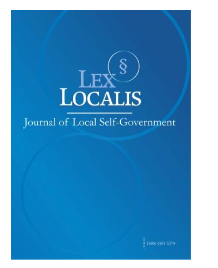INNOVATIVE PAVEMENT MANAGEMENT SYSTEM & SUSTAINABLE ROADS IN THE CITY OF DUBAI
DOI:
https://doi.org/10.52152/800493Keywords:
Pavement Management System, International Roughness Index, LCMS-2, smartphone-based monitoring, sustainable roads, Dubai RTA, predictive maintenance.Abstract
The exponential growth of Dubai, which is occurring as a result of urbanization, has imposed unparalleled pressure on its road infrastructure necessitating the development of innovative, data-driven Pavement Management Systems (PMS) that are in line with the sustainability agenda. This study examines the possibility of having a combined technique that uses sophisticated technologies such as the Laser Crack Measurement System (LCMS-2) and scalable, smartphone-based roughness detection to improve asset management in Dubai and other cities in the area including Khorfakkan, Sharjah and Fujairah. IRI is a key performance measure because it is the point of connection between ride comfort, maintenance, and economic sustainability. Smartphones mounted in vehicles were used to record field data on 250 road segments to simulate an elevation profile and estimate the values of IRI, which were compared with high-resolution LCMS-2 outputs. The results indicate that there were significant correlations between IRI and the pavement distress measures, which means its reliability to be used in proactive maintenance planning. The outcomes reveal regional differences: Sharjah has lower IRI which indicates the successful preservation measures, whereas Khorfakkan and Fujairah need priority interventions. This hybrid system facilitates the economical monitoring of large areas, which is a viable option to municipalities that have limited funds. Moreover, it also promotes the Roads and Transport Authority vision of Dubai in terms of smooth, sustainable mobility by incorporating the concepts of big data analysis, IoT and citizen-based monitoring into the traditional PMS processes. This study demonstrates how smart, predictive maintenance can be used to maximize asset life, minimize environmental impact, and enhance user satisfaction, by integrating the high-end survey systems with innovative low-cost approaches. On the whole, the study provides the model that can be repeated to build resilient, future-proofed road networks in the rapidly urbanized cities, making their roads safe, comfortable, and sustainable by all users.
Downloads
Published
Issue
Section
License
Copyright (c) 2025 Lex localis - Journal of Local Self-Government

This work is licensed under a Creative Commons Attribution-NonCommercial-NoDerivatives 4.0 International License.








